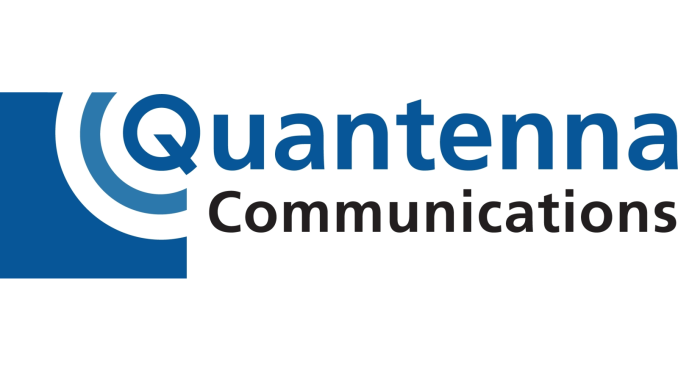Quantenna Announces Development of 10G Wi-Fi 802.11ac Chipset
by Ganesh T S on April 14, 2014 8:00 AM EST- Posted in
- Networking
- 802.11ac
- Wi-Fi
- Quantenna

At the beginning of 2012 Broadcom announced its first 802.11ac chipsets under the banner of 5G (5th generation) WiFi. Since then we've seen the latest high end notebooks adopt 802.11ac, as well as a handful of flagship smartphones and tablets. The first generation of 802.11ac devices brought 80MHz channels and 256-QAM to a 5GHz interface that enabled real transfer speeds of as much as 600/900Mbps (TCP/UDP) for a 3-antenna/3-stream solution.
We saw Wave2 chipsets being introduced by Quantenna at CES and, recently, Qualcomm. Recent draft amendments have enabled a few optional (WiFi Alliance certified) features:
1) 8-stream configurations (up from 3-stream previously)
2) up to 160MHz channels (up from 80MHz) (Wave2 only), and
3) Multi-user MIMO (MU-MIMO) (Wave2 only)
While Broadcom made a big splash with the 5G branding, Quantenna is taking the lead this time around with 10G. By taking advantages of MU-MIMO and putting in support for 8 spatial streams, Quantenna hopes to deliver speeds of up to 10 Gbps . Quantenna's massive 8x8 MIMO promises reduced interference while handling multiple devices simultaneously. While the 4x4 solution we covered at CES is expected to go into mass production later this year, the 8x8 chipset is expected to arrive in 2015.
Quantenna also took the opportunity of this development announcement to reiterate design wins / partnerships with Asus (consumer router, AC87U), Texas Instruments (enterprise and small cell LTE base stations), STMicro (SoC offerings) and Mimosa (outdoor wireless solutions).
8x8 802.11ac solutions may appear to be an overkill for home usage (few clients and none with more than two spatial streams), but they are definitely a great solution for wireless bridges and enterprise access points. Reliable high-range 10G Wi-Fi also has the ability to open up new applications. Beyond the chip design challenges that Quantenna aims to solve, system builders also have to handle power, antenna placement and other RF issues before 8x8 802.11ac-based products can hit the market.










19 Comments
View All Comments
chinmaythosar - Monday, April 14, 2014 - link
typo , last line 'anternna' ..webmastir - Monday, April 14, 2014 - link
Cable less server rooms in <10yrs. You heard it here folks.extide - Monday, April 14, 2014 - link
I highly doubt it. Sometimes you just can't beat the simplicity of a cable, no configuration/pairing, etc.DanNeely - Monday, April 14, 2014 - link
Except on the very small/low end I doubt it. Once you've got multiple racks up and running with a decent set of high network activity apps running on a few of them the single 10gb for the room an access point based on something like this can offer will be swamped.Also, QoS is much easier to get and maintain on a wired network.
solipsism - Tuesday, April 29, 2014 - link
As well as security.Cogman - Monday, April 14, 2014 - link
Yes, lets take something that is VERY secure, VERY reliable, and VERY fast and replace it with something that isn't as secure, reliable, or fast. Because.. screw it, we hate wires!And don't forget, there isn't a single technology which is currently applied to wireless to make it fast which couldn't also be applied to an optical cable (if most of them aren't already). Optical cables operate on the same principles as wireless signals. The difference is the medium (which, the optical medium is WAY more reliable and less prone to things like interference)
After all, it is EM radiation all the way down.
enealDC - Tuesday, April 15, 2014 - link
could not have said it better.wolrah - Thursday, April 17, 2014 - link
Never. Never ever.I have no idea why people keep saying this, but they obviously don't understand server networking needs or the simple fact that anything you can do over a wireless connection to make it carry more traffic also applies equally to wires. Wires will always have more bandwidth and less interference, end of story.
Wireless networks are good for mobility and easier to install, but servers don't move and are usually located in rooms intended to be easily wired.
TransformationCAFromSpace - Saturday, April 19, 2014 - link
Well, if it's a concentrating solar farm and an attempt to get biome and raptor nests (and munition detection) fostered out on the edge where aves won't be instacooked flying above the heliostats...and they eat orange cables, mind you, then sure. Until you want peered hadoop services; then the tunnels will be (salt loops or) fiber, because you can't stack open antenna spaces together (even if you're fine sighting signal down rows of heliostats somehow.) Salt loop server cooling and networking is a midge harder if you want a lateral technology stack from other cogeneration...crank those heat pump junctions up a notch and design cold junctions with biomes. Who wants high-test steel packed with alumina as cladding if it can be paying clients?welkie - Thursday, April 24, 2014 - link
Wireless is useful where the clients are moving around. Wired always seems to perform better with stationary clients. I don't wanna be all Bill Gates here, but nobody will ever need more than a shielded cat6 ethernet cable. ;)